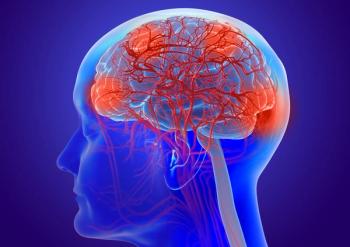
- ONCOLOGY Vol 19 No 14
- Volume 19
- Issue 14
Commentary (Gilbert): Locoregional Therapies for Glioma
The treatment of malignant gliomashas received significant attentionover the past decade.This likely represents recognition ofthe poor prognosis associated withthese cancers combined with the challengeof developing a treatment strategyfor a neoplasm that, although itrarely metastasizes, has not proven tobe curable by surgical resection. Infact, debate continues about the roleof aggressive surgery in this disease,given that an image-guided biopsycan provide accurate diagnosis whileminimizing any procedure-relatedmorbidity and mortality. Some studieshave strongly suggested a therapeuticbenefit with surgical resection,but the extent of resection is a criticalcomponent.
The treatment of malignant gliomas has received significant attention over the past decade. This likely represents recognition of the poor prognosis associated with these cancers combined with the challenge of developing a treatment strategy for a neoplasm that, although it rarely metastasizes, has not proven to be curable by surgical resection. In fact, debate continues about the role of aggressive surgery in this disease, given that an image-guided biopsy can provide accurate diagnosis while minimizing any procedure-related morbidity and mortality. Some studies have strongly suggested a therapeutic benefit with surgical resection, but the extent of resection is a critical component. For example, the study by LaCroix and colleagues demonstrated a survival benefit only if there was a 98% or greater volumetric resection of the enhancing tumor.[1] Although this study supports extensive resection, an inherent patient selection exists; only patients with tumors suitable for gross total removal were enrolled. This represents only a subset of the patients with malignant gliomas, leaving many patients with large residual tumor masses that would need to be reduced by other local therapies for prognosis to improve. Treatment Paradox
Therefore, extensive efforts are under way to expand the paradigm of local therapy, typified by aggressive surgical excision. The article by Mamelak reviews many of the treatment approaches classified as locoregional. These include intracavitary and intraparenchymal infusions of chemotherapy, placement of biodegradable polymer-based wafer providing sustained release of chemotherapy, as well as the local delivery of novel vectors such as viruses or stem cells delivering lethal genes. The scope of this review underscores the great paradox in brain tumor treat- ment-what sounds so easy in theory, has proven nearly impossible. This is apparent when reviewing the great disparity between the successes of these locoregional strategies in preclinical models with the minimal to modest success in clinical use. The discrepancy is not the result of greater treatment sensitivity in laboratory models; rather, the issue is with delivery of the agent. As described in the article by Mamelak, there was great enthusiasm for the use of the herpes simplex virus thymidine kinase (HSV-TK) gene. Preclinical work clearly demonstrated that successful gene transfection followed by treatment with either acyclovir or gancylcovir could completely eradicate tumor in both in vitro and in vivo models.[2] Despite the treatment being well tolerated, however, a phase III trial in patients with newly diagnosed glioblastoma showed no advantage by adding gene therapy to conventional treatment.[3] The failure of this treatment regimen has been attributed to the method of delivery. Typically, immediately after tumor resection, the vector cells containing the HSV-TK gene were manually injected into the walls of the tumor cavity. Most participating neurosurgeons did use a grid system to maximize the distribution of the treatment. However, more recent studies, particularly the work of Lang and colleagues, demonstrate that the local delivery technique is severely limited.[4] In this trial, tumors were treated with an adenovirus containing the p53 gene. The infusion of the virus-containing fluid was performed through a stereotactically placed catheter. Several days later, the tumor was excised en bloc and the spread of virus was measured using the in-place catheter as a fiducial marker. Despite treatment with a high concentration of virus, the viral vector was able to penetrate only a few millimeters from the catheter. Therefore, even when the therapeutic agent has proven efficacy, inability to adequately deliver the agent will ultimately result in failure. Overall Potential Benefit
This concern leads to the question of the overall potential benefit from locoregional treatment strategies. As described by Mamelak, even at the time of diagnosis, glioma cells are often many centimeters away from the primary tumor location. Therefore, can a local strategy ever be curative? Given the aforementioned problems with delivery, a convincing argument can be made against local treatments. Despite these concerns, investigations should continue on these treatment strategies for several reasons. The first relates to the natural history of malignant gliomas and their propensity to recur locally. Improving local control should improve survival, even if this is unlikely to be a curative strategy. Second, local therapies are often performed at the time of surgery, rarely cause systemic tox- icity, and can be complementary to planned or ongoing systemic treatment. Third, important biologic data can be obtained because such treatments often require catheter implantation or other means of direct access, providing the ability to acquire serial tumor samples. Using this paradigm, molecular effects of treatment can be determined, guiding future treatment development and supporting the concept of rationally designed combination strategies[5]. Finally, successful local control using a locoregional strategy will support the development of a targeted strategy that selectively affects tumor while sparing normal surrounding glial and neuronal cells. Recent work with selective mutations of the adenovirus, such as the Delta- 24 virus, suggests that these manipulations provide tumor selectivity therefore permitting replication competency without the risk of brain injury such as encephalitis.[6] Ongoing Investigations
The review by Mamelak provides a nice overview of the varied approaches to both the techniques of delivery and the treatments themselves. These investigations are in various stages of development, and the diversity of these efforts underscores the widespread interest in the fundamental concept of taking advantage of the lack of systemic spread of primary brain tumors. As with most ongoing investigations, caution should be exercised when interpreting results, particularly from single-arm trials with small patient populations. Previous studies have clearly demonstrated that selection bias can significantly skew results, based not on treatment efficacy but confounding prognostic variables such as age, performance status, and tumor accessibility. The study by Florell and colleagues demonstrated that patients eligible for the local treatment (brachytherapy) had a better outcome than the average patient, even if the treatment was not administered.[7] Similar concerns exist with patient selection for other local therapies. Conclusions
Recognizing these treatment delivery issues and concerns regarding response, efforts should continue to develop and optimize these regionally administered therapies. I would modify the closing statement in the paper by Mamelak which states that "locoregional treatment strategies provide the greatest hope for effective control" to "locoregional treatment strategies provide the greatest hope for effective local control." This is an important distinction that encourages parallel efforts in systemic therapies targeting distant infiltrating tumor cells, with the hope that the combination of local and systemic therapies will ultimately lead to cure.
Disclosures:
The author has no significant financial interest or other relationship with the manufacturers of any products or providers of any service mentioned in this article.
References:
1. Lacroix M, Abi-Said D, Fourney DR, et al: A multivariate analysis of 416 patients with glioblastoma multiforme: Prognosis, extent of resection, and survival. J Neurosurg 95:190- 198, 2001.
2. Culver KW, Ram Z, Wallbridge S, et al: In vivo gene transfer with retroviral vector-producer cells for treatment of experimental brain tumors. Science 256:1550-1552, 1992.
3. Rainov NG: A phase III clinical evaluation of herpes simplex virus type 1 thymidine kinase and ganciclovir gene therapy as an adjuvant to surgical resection and radiation in adults with previously untreated glioblastoma multiforme. Hum Gene Ther 11:2389-2401, 2000.
4. Lang FF, Bruner JM, Fuller GN, et al: Phase I trial of adenovirus-mediated p53 gene therapy for recurrent glioma: Biological and clinical results. J Clin Oncol 21:2508-2518, 2003.
5. Lang FF, Gilbert MR, Puduvalli VK, et al: Toward better early-phase brain tumor clinical trials: A reappraisal of current methods and proposals for future strategies. Neuro-oncol 4:268-277, 2002.
6. Gomez-Manzano C, Balague C, Alemany R, et al: A novel E1A-E1B mutant adenovirus induces glioma regression in vivo. Oncogene 23:1821-1828, 2004.
7. Florell RC, Macdonald DR, Irish WD, et al: Selection bias, survival, and brachytherapy for glioma. J Neurosurg 76:179-183, 1992.
Articles in this issue
about 20 years ago
Commentary (Kaufman/Lonial): New Treatments for Multiple Myelomaabout 20 years ago
New Treatments for Multiple Myelomaabout 20 years ago
Commentary (Nowakowski/Rajkumar): New Treatments for Multiple Myelomaabout 20 years ago
Commentary (Reardon): Locoregional Therapies for GliomaNewsletter
Stay up to date on recent advances in the multidisciplinary approach to cancer.

















































































